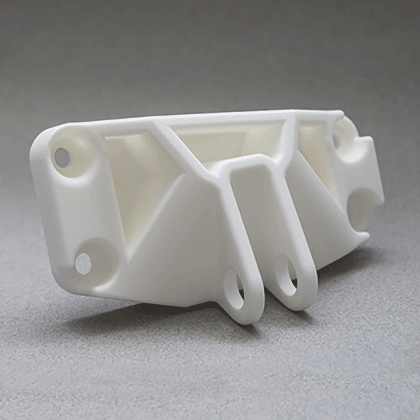Unlocking the Future: Discover the Magic of SLS Printing Technology and Its Surprising Uses!
In the rapidly evolving landscape of modern manufacturing, SLS (Selective Laser Sintering) printing technology stands out as a revolutionary force in the world of 3D printing. This innovative method has not only transformed how we approach design and production, but it has also paved the way for more efficient and sustainable manufacturing processes. This article aims to demystify SLS printing technology, exploring its mechanics, applications, and future potential. Readers will gain insights into how SLS printing service is shaping various industries and the creative possibilities it offers, encouraging them to envision its use in their own projects.

Understanding SLS Printing Technology
Selective Laser Sintering (SLS) is a 3D printing technology that employs a laser to fuse powdered materials into solid structures. This method distinguishes itself from other 3D printing techniques by using a high-powered laser to selectively sinter powdered material, layer by layer, to create complex geometries. The materials most commonly used in SLS printing include nylon, polycarbonate, and various metal powders, each selected for their unique properties and applications. Unlike other methods such as FDM (Fused Deposition Modeling) which extrudes thermoplastic filament, SLS does not require support structures because the unsintered powder provides the necessary support during the printing process. This gives SLS a significant advantage in producing intricate designs that would be difficult or impossible to achieve with traditional manufacturing methods.
The Process of SLS Printing
The SLS printing process can be broken down into several key stages. First, a digital 3D model is created using computer-aided design (CAD) software. Once the model is finalized, it is sliced into thin layers, and the build platform is lowered into a bed of powder. A high-powered laser then scans the surface of the powder bed, sintering the particles together according to the design. After the laser completes one layer, the build platform lowers further into the powder bed, and a new layer of powder is spread over the previous one. This process repeats until the entire object is complete. Once the printing is finished, the build chamber is allowed to cool, and the unsintered powder is removed, revealing the finished part. This step-by-step process showcases the efficiency and precision of SLS technology, making it ideal for creating complex and durable prototypes and final products.
Applications of SLS Printing Technology
SLS printing technology has found its place in a variety of industries, significantly enhancing production capabilities and design flexibility. In aerospace, for instance, companies utilize SLS to create lightweight yet strong components that can withstand the rigors of flight. The automotive industry has also embraced SLS for rapid prototyping and small-batch production of parts, allowing for quicker design iterations and reduced lead times. In the healthcare sector, SLS printing is employed to produce customized implants and surgical instruments tailored to individual patient needs, showcasing its potential for personalized medicine. Consumer products have also benefited from SLS technology, as brands leverage its capabilities to create unique and complex designs that stand out in the marketplace.
Innovative Uses in Different Sectors
Beyond traditional applications, SLS printing has sparked innovation in various sectors, including fashion, architecture, and education. In the fashion industry, designers are experimenting with SLS printing to create intricate accessories and garments that challenge conventional design boundaries. In architecture, SLS technology is being used to produce detailed models that help architects visualize their projects more effectively. Educational institutions have also recognized the potential of SLS printing as a teaching tool, inspiring the next generation of engineers and designers to explore the possibilities of 3D printing in their studies and future careers.
The Future of SLS Printing
The future of SLS printing looks promising, with ongoing advancements in technology and material science. Researchers are exploring new materials that can enhance the properties of printed parts, such as biocompatible materials for medical applications and more sustainable options for eco-conscious manufacturing. Moreover, improvements in laser technology and software are expected to increase the speed and accuracy of SLS printing, making it even more accessible to a broader range of industries. As sustainability becomes a focal point in manufacturing, SLS technology’s ability to minimize waste through its powder recycling capabilities positions it as a frontrunner in the quest for greener production methods.
Significance and Future of SLS Technology
In conclusion, SLS printing technology represents a significant leap forward in manufacturing and design, offering unparalleled versatility and efficiency. From its intricate workings to its diverse applications across various industries, SLS printing is redefining what is possible in the realm of 3D printing. As we look to the future, the potential for SLS technology to revolutionize production processes and contribute to more sustainable practices cannot be overstated. This technology opens up new avenues for creativity and innovation, encouraging readers to consider how SLS printing might enhance their projects and industries, ushering in a new era of manufacturing possibilities.








